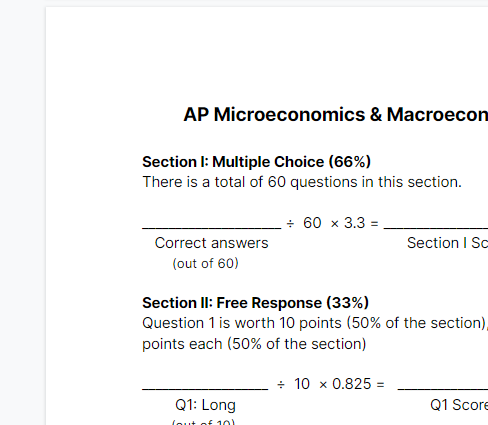

You'll want to know about fixed vs floating currencies, how countries affect their currencies, and how these policies can affect GDP. Finally, the exam tests a student’s knowledge of how currencies work. Students will also want to have some basic knowledge about the financial sector of the economy.

Students must also be familiar with fiscal and monetary policy and how these two policies affect an economic system. This includes supply and demand, trade, and opportunity cost. In Macroeconomics, students must be familiar with large-scale economic concepts. Section 1 is worth about 66% of the final score, and Section 2 is worth approximately 33% of your final grade. The first free-response question is a long essay, which is followed by two shorter free-response questions. Part 2 consists of 3 free-response questions, which the test-taker has 1 hour to complete. Part 1 consists of 60 multiple choice questions, which the test taker has 70 minutes to complete. Because these two AP exams are offered on different testing dates, students can take both tests in the same year.īoth the AP Microeconomics and AP Macroeconomics exams use the same format. Each of these is a semester-long high school course. Excellent choice! The College Board offers two separate AP classes in college-level Economics: Microeconomics and Macroeconomics. So you've read our guide to the AP tests and you've decided to pursue AP Economics.


 0 kommentar(er)
0 kommentar(er)
